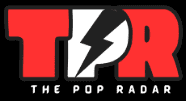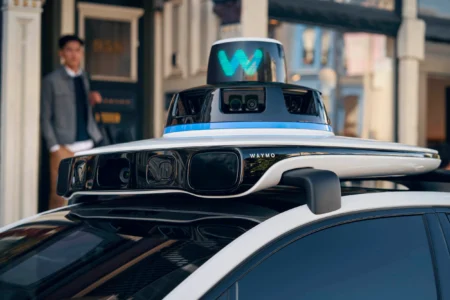Introduction
The Internet of Things (IoT) continues to revolutionize industries and daily life in 2025, connecting billions of devices worldwide. With advancements in AI, 5G, and edge computing, IoT is driving smarter cities, efficient industries, and personalized consumer experiences. This blog explores key applications, benefits, challenges, and future trends shaping IoT in 2025 and beyond.
What is IoT?
IoT refers to a network of interconnected devices that communicate and exchange data in real-time. These devices range from smart home gadgets to industrial sensors, creating seamless automation and data-driven decision-making.
Key Components of IoT:
- Sensors & Devices: Collect data from the environment.
- Connectivity: 5G, Wi-Fi, Bluetooth, and LPWAN power IoT communication.
- Edge Computing: Processes data closer to the source, reducing latency.
- AI & Machine Learning: Enhances automation and predictive analytics.
Key Applications of IoT in 2025
1. Smart Cities & Urban Development
- AI-driven traffic management and smart street lighting optimize energy use.
- Real-time air quality monitoring improves public health.
- 5G-powered autonomous public transportation enhances mobility.
Example: Cities like Singapore and Amsterdam use IoT-powered smart grids to optimize energy consumption.
2. Industrial IoT (IIoT) & Manufacturing
- Predictive maintenance reduces downtime and repair costs.
- IoT-driven robotics improve automation in manufacturing.
- AI-powered quality control systems enhance production efficiency.
Example: Companies like Siemens and General Electric implement AI-driven IoT solutions for efficient supply chain management.
3. Healthcare & Remote Patient Monitoring
- Wearable IoT devices track vital signs in real-time.
- AI-powered diagnostics improve early disease detection.
- IoT-enabled telemedicine expands healthcare accessibility.
Example: Hospitals use IoT-connected devices for real-time patient monitoring and smart medical alerts.
4. Smart Homes & Consumer IoT
- AI-driven home automation systems optimize energy use.
- Voice-controlled IoT assistants provide seamless control.
- Smart security cameras enhance home safety.
Example: Devices like Amazon Alexa and Google Nest integrate AI for personalized smart home experiences.
5. Agriculture & Smart Farming
- IoT-based irrigation systems optimize water usage.
- AI-powered drones monitor crop health.
- Connected livestock tracking enhances farm productivity.
Example: Farmers use AI-driven IoT sensors to optimize crop yield and soil health monitoring.
6. Retail & E-Commerce
- IoT-powered smart shelves track inventory in real-time.
- AI-driven personalized shopping experiences improve customer satisfaction.
- Automated checkout systems reduce wait times.
Example: Amazon Go stores use IoT-powered checkout-free shopping to enhance retail experiences.
7. Energy Management & Sustainability
- Smart grids optimize electricity distribution.
- IoT-driven renewable energy systems improve efficiency.
- AI-powered waste management systems reduce environmental impact.
Example: Cities integrate IoT-driven smart meters to monitor and reduce energy consumption.
Benefits of IoT Expansion
1. Improved Efficiency & Automation
IoT reduces manual processes, increasing operational efficiency across industries.
2. Real-Time Data Insights
AI-driven IoT analytics enhance decision-making and predictive maintenance.
3. Cost Savings & Resource Optimization
Smart automation lowers costs by optimizing energy use, inventory management, and maintenance.
4. Enhanced Security & Safety
IoT-powered security systems improve cybersecurity and surveillance in smart cities and industries.
5. Sustainability & Environmental Benefits
IoT reduces waste, optimizes energy consumption, and enhances green technology adoption.
Challenges of IoT Adoption
1. Cybersecurity & Data Privacy Risks
- IoT devices are vulnerable to hacking and cyberattacks.
- Stronger encryption and AI-powered security protocols are needed.
2. High Infrastructure Costs
- Upgrading networks and integrating IoT devices require significant investment.
- Smaller businesses may struggle with affordability.
3. Interoperability & Standardization Issues
- Different manufacturers use varied communication protocols.
- Lack of global IoT standards hinders seamless integration.
4. Scalability & Network Congestion
- Billions of IoT devices strain network bandwidth.
- 5G and edge computing are critical for scalability.
Future Trends in IoT (2025 & Beyond)
1. AI-Driven IoT (AIoT)
- AI-powered predictive analytics enhance automation and decision-making.
- AI-driven IoT chatbots and virtual assistants improve user interactions.
2. 5G-Powered IoT Expansion
- Ultra-low latency 5G networks enhance IoT performance.
- Real-time data processing improves autonomous vehicles, healthcare, and smart cities.
3. Edge Computing & IoT
- Reduces cloud dependency by processing data closer to the source.
- Enhances real-time analytics and cybersecurity.
4. Blockchain for IoT Security
- Ensures secure and transparent IoT transactions.
- Protects IoT networks from cyber threats and data breaches.
5. IoT-Powered Digital Twins
- Virtual models of factories, cities, and supply chains improve efficiency.
- AI-driven real-time monitoring and simulation for predictive maintenance.
6. Sustainable & Green IoT
- IoT innovations optimize renewable energy production and carbon footprint reduction.
- AI-driven climate monitoring systems help combat global warming.
Conclusion
IoT in 2025 is transforming smart cities, industries, healthcare, and everyday life, unlocking unparalleled efficiency and innovation. As IoT adoption grows, advancements in AI, 5G, edge computing, and cybersecurity will drive the next wave of connected intelligence.
What’s Next?
Are you ready to explore the future of IoT and smart automation? Stay informed about IoT trends, AI-driven innovations, and cutting-edge connectivity solutions.








